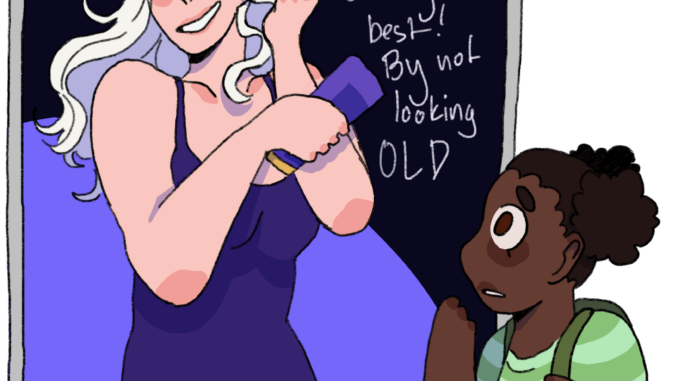
Skincare, haircare, bodycare. The addition of the suffix “-care” is strange. It should go without saying that we should be caring for and maintaining our bodies to the best of our abilities. After all, our skin is the largest organ in our body, so it makes perfect sense to have a routine centered around its upkeep. However, when “-care” is added to the end of the word, it instead becomes a genre of product, which can be narrowed down by concern, age range, formulation, benefits, concerns and more, ultimately reducing the efficacy of real care that is at the root of the label.
Skincare is a multibillion dollar industry, and with the rise of e-commerce sites and social media over the last 10 years, it has only continued to boom. The industry’s concerns are not for the health of your skin, but rather how they can expand the demographic of people who buy skincare products so it can increase its revenue. Good skincare products are meant to assist your skin’s functions, not act in place of them. “Good” skin, after all, is mostly determined by whether you won the genetic lottery, followed by your nutrition and health and, of course, your age.
It is no secret that we are scared of aging. “Good” skin is characterized by its youthful, glowing, “soft as a baby’s bottom” appearance. When you are young, the amount of products you “need” is less than when you are older. This is due to young skin having more elasticity and the ability to retain water as it has more fat and collagen in deeper tissue layers. As you age, the production of these nutrients decreases and outside assistance, in the form of product, is sought out.
I am not anti-skincare. I, myself, have a relatively complicated skincare routine, which differs by time of day, season and occasionally the amount of effort I want to put in. I wear sunscreen daily and keep a sunscreen stick on me at all times. I slug in the winter and I steal retinol from my mother’s cabinet when I am home. By age 16, I had been doing the 10-step Korean skincare routine for about three years. Now, at age 20, I use a three to five step evening routine (face wash, toner, exfoliant, serum, eye cream and moisturizer).
The reason I have reduced my skincare routine is simply because I did not need all of it. It was hard to maintain with a busy schedule and, on occasion, all that skincare would do the opposite and just make me break out. At the ages of 13 to 16, I had no reason to be double cleansing my face using an oil and a water cleanser if I was not wearing makeup that day; I did not need to be wearing eye cream or essence because I had no fine lines or wrinkles, as I was in the youthful years of my teens. Sure, it was fun sometimes to have an adult skincare routine, but my skin — and yours as well — already has mechanisms in place to exfoliate itself, turn over cells and do all the other things it is supposed to do.
There is such a thing as “too young” for skincare. Retinoids and acids can be too harsh for young skin and cause irritation, rashes and hyperpigmentation. The tweens and teens on my Tiktok “For You Page” who are using brands such as Drunk Elephant, Paula’s Choice, Glow Recipe and other pricier products have been made to make teenagers believe that they need to invest in anti-aging products now or else they will not be beautiful when they are older.
Skincare, especially fror those who are just getting into it, should be taught as a part of hygiene and caring for our body rather than a way to prevent aging. Regardless of age, we should all embrace the skin we have and learn to let it do its job. If you choose to take away anything from this article, please wear your sunscreen.
Subscribe to the Mossy Log Newsletter
Stay up to date with the goings-on at Lewis & Clark! Get the top stories or your favorite section delivered to your inbox whenever we release a new issue.

Leave a Reply